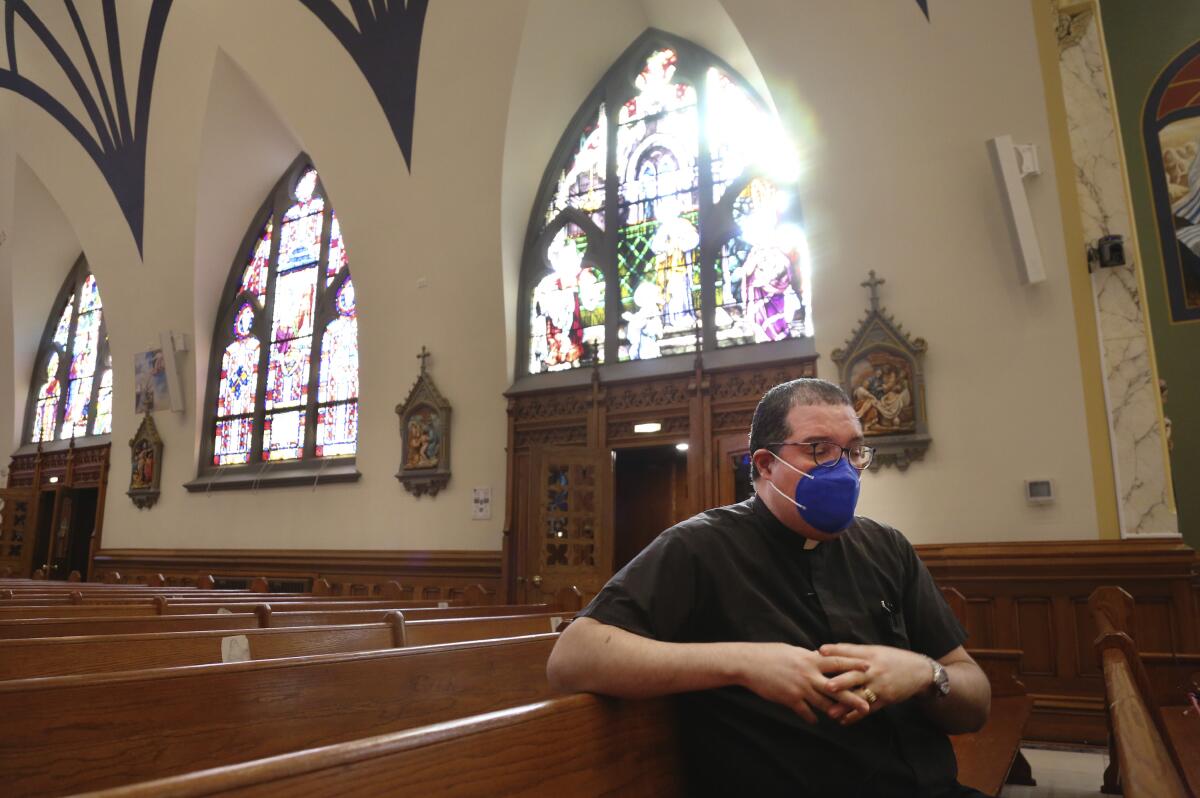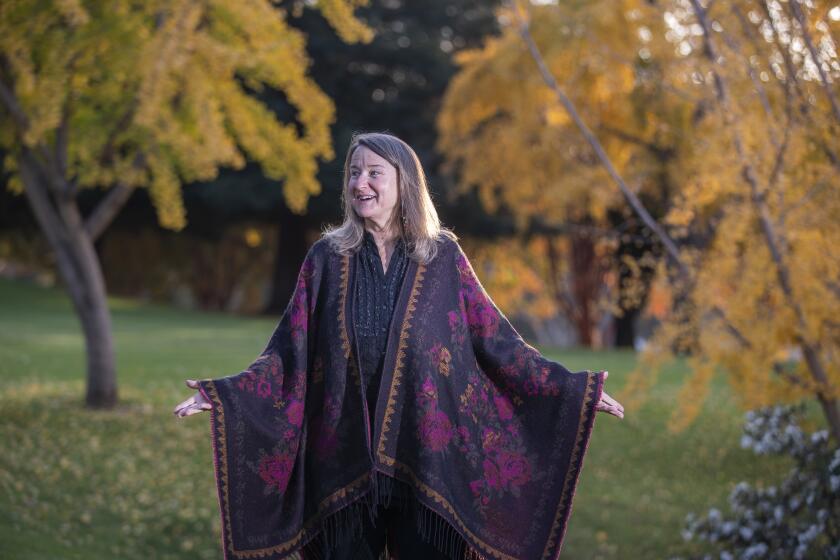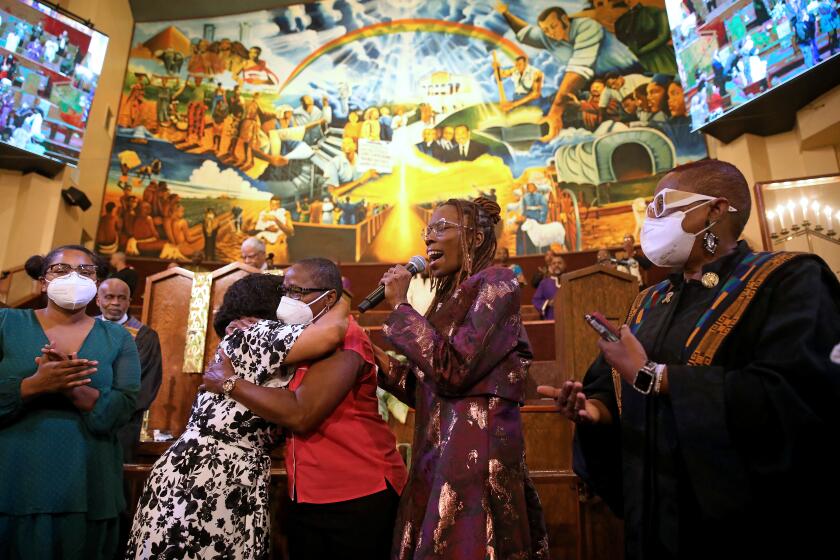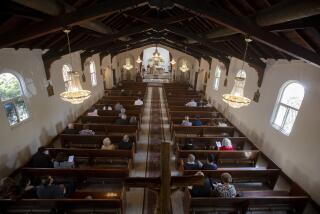Religious service attendance declines a bit after pandemic, poll finds

- Share via
A “stable share” of Americans has participated in religious services in some way — virtually or in person — during the COVID-19 pandemic, though in-person attendance is slightly lower than before the global outbreak.
Those are among the key findings in a comprehensive report released Tuesday by the Pew Research Center.
The poll found that the share of U.S. adults typically attending religious services at least once a month dropped from 33% in 2019 to 30% in 2022. About 20% of Americans say they now attend in person less often than they did before the pandemic.
But the survey also found that the percentage of U.S. adults who take part in religious services in some way each month — in person, virtually or both — remained steady since the early days of the pandemic.
These women went through spiritual journeys that were sparked, sped up or heightened by the pandemic.
Researchers based their analysis on five surveys conducted since the start of the pandemic. They show that “a remarkably steady share of Americans — about 40% — say they have participated in religious services in the prior month one way or the other (either in person or virtually, i.e., by streaming online or watching on TV).”
When asked whether they now attend religious services more or less often than they did before COVID-19, more Americans say that their attendance has declined.
In San Francisco, the historic Old St. Mary’s Cathedral struggled to stay open during the pandemic. The 160-year-old Roman Catholic church, which is heavily dependent on older worshippers and tourists, lost most of its revenue after parishes closed during the pandemic. The ranks of regular parishioners dropped from 300 before COVID-19, to about 200 now, said the Rev. John Ardis, who had to dismiss most of the lay staff and close the parish preschool.
“About 40% of our regular parishioners have chosen not to return,” Ardis said, adding that most parishioners are elderly and those who returned are still wearing masks at services. The pandemic “has been a big and continual hit,” he said.
Religious leaders are increasingly wading into the conversation around the ethics of artificial intelligence. Their message? Proceed with caution.
Thomas Groome, professor of theology and religious education at Boston College, said he wasn’t surprised by the survey’s findings.
“There are some signs that attendance is coming back, but it’ll probably never come back to where it was before the pandemic,” he said.
“I think people learned how to nurture their spiritual lives and faith without necessarily going to their local church every Sunday,” he added. “I know some of them went there virtually by Zoom. ... Many read the Scriptures themselves or they got together with neighbors or they bonded into family groups.”
By November 2022, 20% of respondents said they were attending in-person less often, while 7% said they were going in-person more often. And 15% said they were participating in services virtually more often, while 5% said they were watching services online or on TV less often.
At least 100 parishioners died from COVID-19 at the 17,000-strong Our Lady of Sorrows Catholic Church in New York City’s borough of Queens.
The number of parishioners who attended its regular services fell, but then rebounded and is now at the same or even higher than before the pandemic, said the Rev. Manuel Rodriguez, the pastor of the mostly Latino congregation.
“But that’s not the case, unfortunately, in other churches where attendance is falling,” he said.
Trauma psychologist Thema Bryant, the second minister to head the American Psychological Assn. in more than 100 years, bridges the historic gap between psychology and religion.
The biggest decline in in-person attendance was found among Black Protestants, according to Pew. As of November, it found that 46% of them said they attended religious services at least once a month, down from 61% in 2019.
The poll surveyed 11,377 U.S. adults in November last year. Its margin of error for the full sample of respondents is plus or minus 1.5 percentage points.
The report focused on major Christian and Jewish denominations. Pew researchers said the report could not analyze the attendance patterns of Buddhists, Hindus Muslims and other smaller non-Christian religious groups due to sample size limitations.
More to Read
Sign up for Essential California
The most important California stories and recommendations in your inbox every morning.
You may occasionally receive promotional content from the Los Angeles Times.













